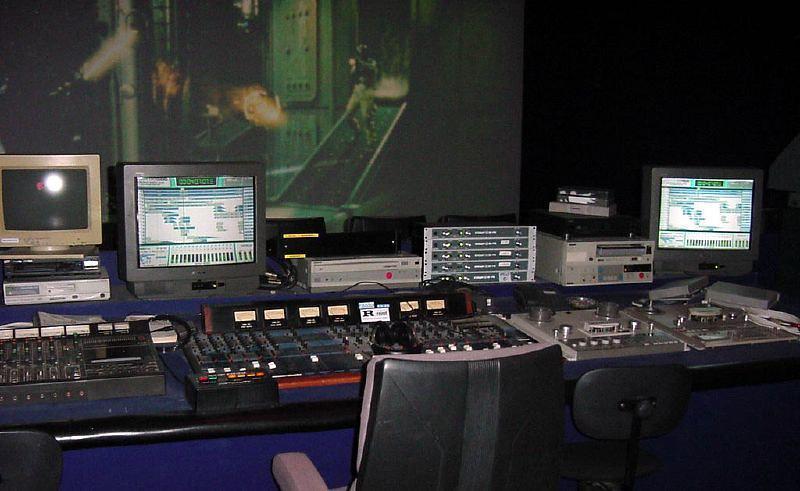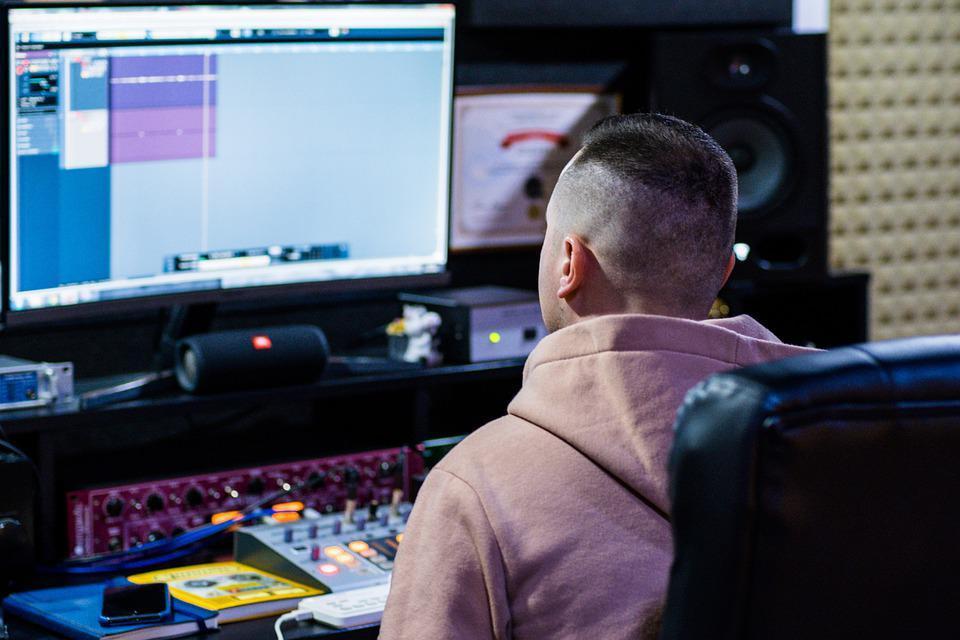Do you want to learn how to make some of the incredible effects seen in blockbusters? As a VFX artist, you will become the one that contributes to the amazing movies.
You will need to practice day by day to perfect your skills. The learning path is not easy, but you can receive what you want when working with passion.
This article will discuss how to become a visual effects artist and the steps you can take to get there. Let’s dig into the details!
What Is a VFX Artist?
VFX artists, or visual effects artists, are professionals who use digital tools to generate visuals in this concept.
As we know, VFX (Visual Effects) is the process of creating digital graphics to edit or improve real-world footage taken with a video camera.
Visual effects refer to the use of produced visuals and camera footage to create scenes that look lifelike but would be unsafe, costly, difficult, time-consuming, or even impossible to shoot on film.
Most of these artists work in the media business on films, TV shows, or video games. They might have different job titles, many of which take the same responsibilities.

What Does A VFX Artist Do?
A VFX artist may be in charge of many tasks, including visual design and creation with computer programs.
They can also work with production teams to discuss their ideas and ensure that all of their models meet production rules and are in sync with the creator’s idea.
Another important role for artists is to inspect any adjustments a crew might make to their works, such as programming or other specialized elements.
A VFX artist can also have the following duties:
- Creating special effects such as dynamic simulations and overlays;
- Following project deadlines;
- Meeting with various artists and programmers ;
- Following VFX supervisors’ and leaders’ orders;
- Testing the effects to make sure they work and look right;
- Making weekly or daily reports to keep track of development.
- Finding inspiration and ideas through research;
- Developing designs and programming on my own.

How To Become a VFX Artist
The road to becoming a visual effects artist is challenging yet rewarding. We have divided your path into five steps so that you can check easier.
1. Earn a degree
When looking for a job as a VFX artist, going to university may give you the best bet.
Consider enrolling in a university program that focuses on visual effects, media, animation, and other tools and skills you’ll need for the job.
Some employers may even demand a degree, so looking into open positions and noting their educational qualifications might benefit.
However, many other firms don’t ask for a bachelor’s degree for this position. They want to test your skills instead.
As a result, you can choose to learn from home, but make sure that you are persistent enough.

2. Earn some certificates
Any VFX artist should be familiar with industry-standard digital design programs. Most of the time, mastering just one software is not enough.
The biggest advantage of short online courses or self-teaching is that you may focus entirely on the apps you wish to master and earn a certificate for.
3. Develop your skills
VFX artists need a strong set of specialized visual art and technical skills to excel in their profession, as their position can involve sophisticated work on complicated projects.
They can benefit from the following technical and soft skills.
- Photography
Learning the basics of photography can be quite beneficial to a young artist.
The artist uses their computer to make a visual effect, much like a photographer captures their vision with their camera.
- Visual aesthetics
Once you understand the visual aesthetics, you can figure out what the public will find interesting, as well as elements like excellent focal points and the beauty of multiple colors, patterns, and layouts.
- Drawing
Understanding the fundamentals of sketching could be advantageous because visual effects are an art form. Moreover, certain styles of animation sometimes require sketching or drawing skills.
- Composition and light
Lights can make or break your scenes, so you understand how to frame light and composition. You must be able to adapt your visual effects skills to each frame of the project.
- Sculpture and Anatomy
It’s important to know how creatures and characters move to their distinctive anatomy because it lends realism to the material, simplifies your task, and makes the materials more realistic for the viewers.
- Movement and mechanic
Knowing various physics and mechanics of how things can move, combined with anatomies, makes your work even more amazing.
- Programming
Skills in computer coding can aid in the development of tools and software for producing visual effects.
You may automate procedures and make your job easier by using such skills to build algorithms and programs.
- Communication
Visual effects artists often collaborate with filmmakers, producers, and other experts as part of a production team.
They can give and accept feedback, share their thoughts, and explain their ideas more effectively if they have good communication skills.
- Project management
Typical VFX project management tasks include forming a skilled team, allocating duties, tracking progress, procuring shoot approvals, and managing castings. All of this necessitates strong project management skills.
- Creativity
The basic task of visual effects comes with imagination and creative thinking skills. They can aid in creating visually striking effects for a movie or video clip that will linger in the minds of audiences for a long time.
- Problem-solving
You can detect problems and find solutions using problem-solving skills, which help you avoid mistakes and maximize your performance.
As a visual effects artist, you can design effects for scenes that don’t exist in real life. To achieve the intended impact, you may need to conduct research and develop new procedures.
- Attention to detail
Because VFX artists work with extremely small aspects of a big image, attention to detail is essential.
This skill enables them to guarantee that their work is accurate and reliable with the picture. It also means that their work is of the highest quality possible.

4. Look for job opportunities
Build your CV and write a cover letter highlighting your visual effects artist skills. Try to m Make your materials as detailed as possible for each position you’re applying for.
Some firms use ATS (Applicant Tracking Systems) software to scan application forms for certain keywords and sort those that have them for recruiters to check.
Take advantage of this tool by including keywords from every job description in your cover letter and CV.
In the application materials, you can also benefit from studying each firm’s objectives and vision and highlighting how you can particularly help them achieve those goals.

5. Advance your skills
There are many ways to advance your skills and climb up your career ladder. You may also want to consider it as a method to raise your salary range.
Earning certificates is a great idea. You can dig into a specific field and learn how to master it. Recruiters love certification because it demonstrates how good the applicants are.
If you aim for senior or manager positions, you may also pursue higher education. Such programs often focus on practical expertise.
Career Opportunities for VFX Artists
What you care about the most when finding a job includes salary and demand. Thankfully, VFX artists will lead you to a good career path in both terms.
Salary
Visual artists can earn somewhere between $25,000 and $70,000, depending on their experience and skills. The average annual earning is $47,500.
You’ll have to invest considerable effort in this field; success won’t just happen to you overnight.
Networking, a high level of dedication, and a desire to achieve will undoubtedly help you climb the career ladder to that $69,000 income.
There is no precise figure. Much of the salary difference is due to the types of projects you work on, the region in which you live, and whether or not you are freelancing.
Although not as stable as a permanent job, freelancing can greatly expand your portfolio and lead you to paths you never expected.
Demand
There are numerous opportunities for artists. These positions have never been more in demand, and if you’re talented and eager to learn, you’ll be able to get a job in the field easily.
Indeed presently has more than 1,000 visual artist openings in the USA and around 400 positions in the United Kingdom.
There are even more employment posts on LinkedIn, including more than 4,300 in the United States and approximately 900 in the United Kingdom.
Thousands of VFX artist jobs are available at some of the world’s most prestigious companies, like Meta, Rockstar Games, PlayStation, Netflix, Framestore, etc.

Frequently Asked Questions
The following questions and answers will give you more ideas about this major. Let’s check them out carefully!
1. Is it hard to become a visual effects artist?
Yes. VFX artists often need a solid set of specialized skills in graphic art and design to excel in their profession, as their job will require sophisticated work on complicated tasks.
A VFX artist, for example, should be competent in designing and developing computer-generated graphics, as many VFX jobs rely on them to create stunning visuals.
2. Is coding required for VFX?
Yes. You’ll need excellent programming skills and a deep understanding of the visual effects pipeline.
You may need a bachelor’s degree in computer science or a relevant field, but the most crucial requirement is a high level of technical skills in the programming languages like C++ and Python.
3. Does VFX need drawing skills?
Only animation needs sketching skills. VFX focuses on the application of special effects to animations, films, and videos and has little to do with drawing but does require software and hardware integration expertise.
4. Can I learn VFX at home?
Yes, you certainly can. You should have some artistic ability or a passion for design and project management.
Many free internet resources can assist you in acquiring the skills required to produce visual effects for cinema or other applications.
If you’re doing it alone, it’ll take years of learning and practice to master it. Your study period will depend on your choice of stream and commitment.
5. What is the difference between CGI and VFX?
Computer-generated imagery (CGI) is a form of animation or illustration in which figures and motion run on computer programs. Meanwhile, visual effects work to enhance current pictures or movies.
You can use miniatures and matte glass paintings to produce VFX without the use of CGI. It is dependent on the customer’s preference and the project’s nature.
6. Is VFX a computer graphics?
Students in computer graphics design primarily work with text and movement graphics to create effects. It’s basically photography and artwork for visual communication. Also, visual effects help to bring a visual world to life.
Conclusion
Now is your time to pursue your ambition of becoming a VFX artist. If this is the road you want to take, work hard to improve your skills, gain experience, and grow your career.
We hope this article has given you a better understanding of how exciting this job can be for creatives. Now go out and find out which schooling is best for you.
If you need further information about your education and career, please feel free to ask. Thank you for reading!
